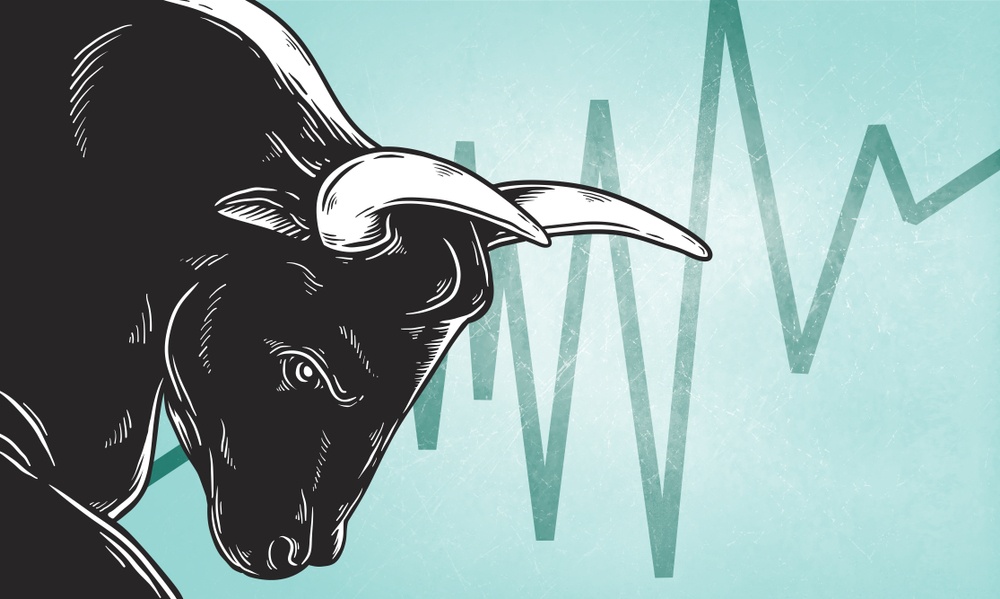The Dow Jones Industrial Average index’s 50-day simple moving average is about to overtake the Dow’s 200-day moving average, which shows the market is heating up as it makes its approach to 2018’s two record highs for the Dow in January and Sept 2018.
But after breaking out and hitting its next record high the index has another correction due.
It will be a reckoning with the inevitable end of the Federal Reserve‘s decade of artificially low-interest rates, and the Dow’s average P/E (price to earnings) ratio.
Join CCN for $9.99 per month and get an ad-free version of CCN including discounts for future events and services. Support our journalists today. Click here to sign up.
As well as the usual disruptions from high tech 21st-century capitalism.
The Dow Appears Poised To Set Another Record High Index This Summer


Source: TradingView
On January 26, 2018, the Dow reached an all-time high of 26,616.71 and eclipsed it on September 20th at 26,656.98 before a precipitous correction leading to the worst December for U.S. equities in living memory before bouncing back to Monday’s 25,914.10 close.
As the Dow added four more days of consecutive gains to its turn-of-the-calendar rally, the Dow Jones’ 2019 bull run is poised for a breakout at the key line of resistance ahead formed by the Dow’s two record highs last year- the two highest peaks in the graph above.
And the Dow’s gains are accelerating as it makes its approach:
Dow 50-day Moving Average Approaching A Golden Cross Breakout Over The 200-Day Moving Average


The Dow keeps adding to its 2019 bounce. | Source: Shutterstock
As its numbers bounce continues for a fourth day, the Dow Jones Industrial Average’s 50-day simple moving average is about to surpass its 200-day moving average, says Sam Stovall, CFRA Research Equity Strategist.
When the 50-day SMA crosses over the 200-day moving average, the breakout pattern is called a golden cross if the 50-day average rises above the 200-day trailing average.
It’s considered by investors to be a strong indication of a bullish market when the moving average periods used for comparison in the analysis are 50 and 200 days.
These moving average periods have relative durations that help the analysis to see well while effectively canceling out noise and giving a solid sense of the market’s broad momentum and center of gravity.
If no major events give markets the jitters, the Dow is trending to set another record all-time high index in mid-summer of 2019.
U.S. Stocks Are Highly Overpriced Relative to Earnings and Productivity


Using the straightforward Buffett Indicator, U.S. stocks are overpriced. | Source: Bill Pugliano / Getty Images / AFP
The long term outlook over the next ten to twenty years is as golden as could be for the world economy and some of the New York Stock exchange’s most productive industrial and commercial giants, and some of America’s most iconic consumer brands.
But after a decade of unprecedented monetary expansion, artificially low interest rates, and the pedal to the medal on federal subsidies, the Dow Jones along with other key benchmarks and the entire equity market is in a massive bubble and 2018’s correction after the last record index was just a taste of what’s ahead.
Using the Buffett Indicator- the total market capitalization of all U.S. stocks divided by the latest gross domestic product- puts productivity side by side with stock value. If it’s high stocks are expensive. If it’s low they’re cheap. It’s currently at an all time high.
While the Dow’s average P/E ratio is higher than 67% of past bull markets.
If you take what people call the “value investing” approach that made Warren Buffett rich and famous (which is really just looking at the financials of the businesses you’re investing in and having some common sense), the Dow is in a calamitous bubble.
